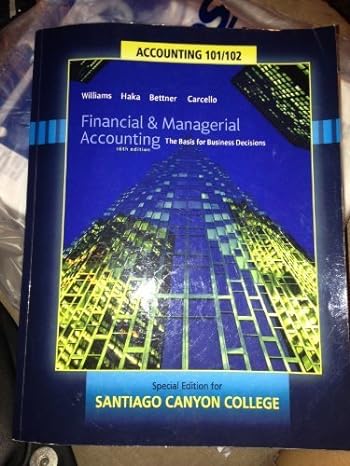Question
16- Segmenting the audit by dividing classes of transactions and account balances that are closely related into segments is called: A- The transaction approach. B-
16- Segmenting the audit by dividing classes of transactions and account balances that are closely related into segments is called: A- The transaction approach. B- The cycle approach. C- The geographical approach. D- The financial approach. 17- The PCAOB standards describe five categories of management assertions including the followings, except: A- Existence or occurrence. B- Completeness. C- Sustainability. D- Rights and obligations. 18- Ownership by a close relative of the covered member is usually not a violation of independence unless: A- The ownership is material to the relative. B- The ownership enables the relative to exercise significant influence over the attest client. C- Both A and B are correct answers. D- None of the above is correct answer. 19- Ownership of stock by a covered member or immediate family is A- Indirect financial interest. B- Related financial interest. C- Paid fees D- Direct financial interest. 20- In order to evaluate and assess the persuasiveness of the evidence, the auditor should consider: A- Relevance and reliability. B- Appropriateness and sufficiency. C- Relevance and Sufficiency. D- Reliability and sufficiency.
Step by Step Solution
There are 3 Steps involved in it
Step: 1

Get Instant Access to Expert-Tailored Solutions
See step-by-step solutions with expert insights and AI powered tools for academic success
Step: 2

Step: 3

Ace Your Homework with AI
Get the answers you need in no time with our AI-driven, step-by-step assistance
Get Started


